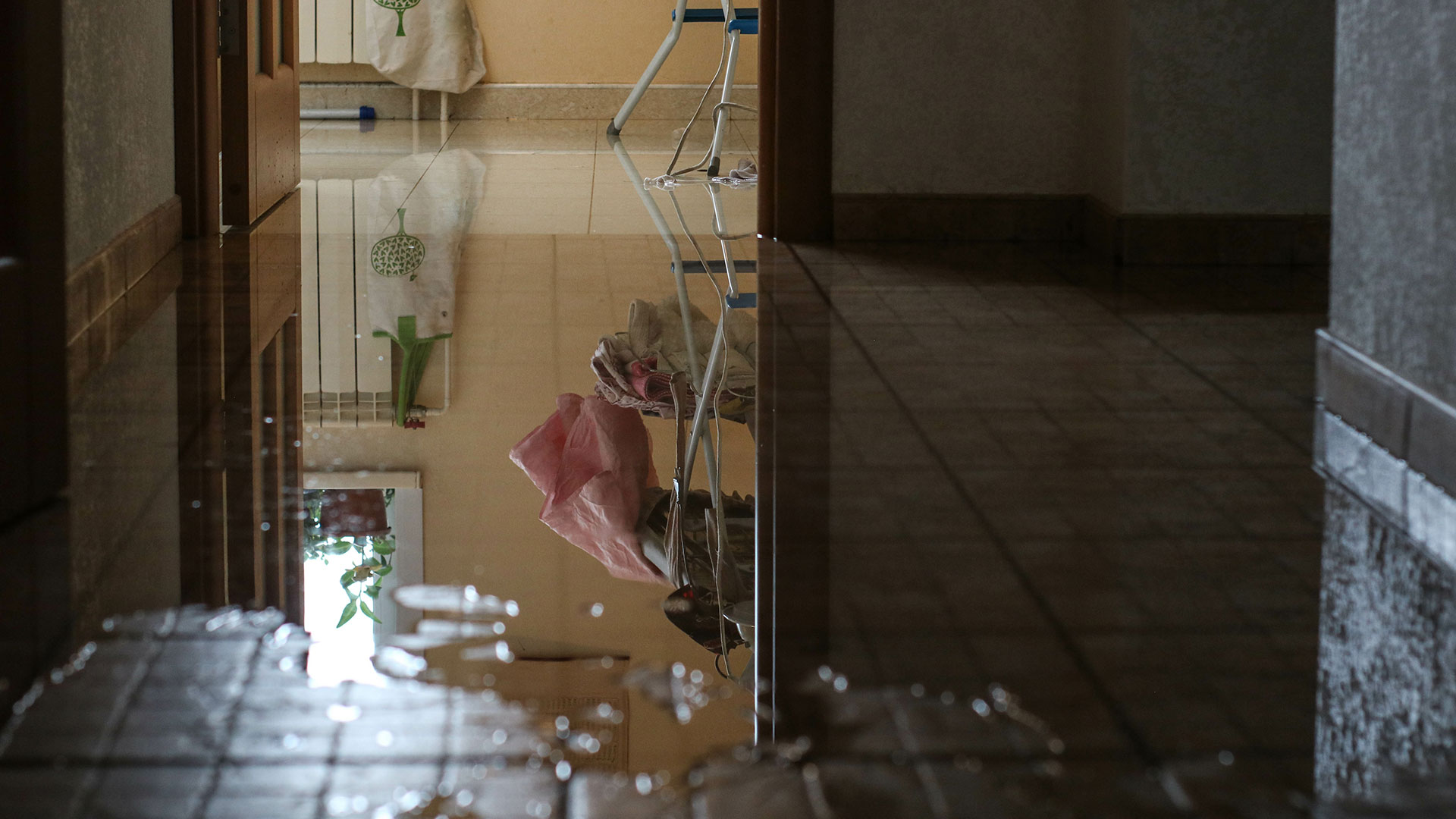Did you know mold can start growing on wet drywall in just 24 to 48 hours after water damage? Drywall soaks up moisture fast because it’s very porous. This makes it a perfect place for mold to grow. Homes with water damage from leaks or floods often see this happen.
It’s important to know how long mold takes to grow on wet drywall. Mold can show up in two to four weeks. It can spread about 1 square inch every day if the conditions are right.
This is a big deal. Mold grows fastest when it’s warm, humid, and there’s no good airflow. Fixing moisture problems quickly can really help stop mold on drywall. If you don’t, it could get worse. This could lead to health problems and more damage to your property.
Key Takeaways
- Mold can begin to colonize on wet drywall within 24 to 48 hours.
- Due to its porous nature, drywall is highly susceptible to mold growth.
- Visible mold can appear within 2 to 4 weeks under optimal conditions.
- Mold spreads at a rate of approximately 1 square inch per day in favorable environments.
- Immediate action is essential to prevent mold infestation following water damage.
Understanding Mold Growth on Wet Drywall
Mold is a type of fungi that grows in moist places. It can harm drywall. So, What is Mold and Why Does it Grow? Mold feeds on organic materials in drywall like paper and cellulose. It starts to grow on wet surfaces within 24 to 48 hours, as the EPA and CDC say.
Under the right conditions, like warmth and high humidity, mold can grow fast. It can start growing in just a few hours after water exposure.
Drywall mold grows due to several factors. These include moisture, the right temperature, and organic materials for mold to eat. If moisture stays for more than 48 hours, mold is likely to grow and spread.
Quick action to control moisture within 48 to 72 hours can prevent damage. It also helps to reduce mold growth on wet surfaces.
It’s important to know the difference between mold and mildew. Mildew stays on the surface, but mold can go deeper. This makes mold harder to remove and more dangerous.
Visible mold may take up to three weeks to show, but its spores can start growing in 48 hours. Once mold gets inside, it can cause drywall to bulge and crack.
Mold growth poses risks beyond just damage. It can harm health, mainly for those with breathing issues, weak immune systems, or allergies. The effects can be dangerous in just 1 to 12 days.
The EPA suggests getting professionals if there’s more than 10 square feet of mold. Certain states require mold checks and fixes in buildings with 10 or more units.
So, understanding What is Mold and Why Does it Grow? is key. It helps solve the problem and prevent it from happening again. Quick action and moisture control are the first steps to a healthy, safe home.
How long does it take for mold to grow on wet drywall?
Mold can start growing on damp drywall quickly. It can begin to colonize within 24 to 48 hours after it gets wet. Warm temperatures and little airflow help mold grow faster. So, it’s very important to dry wet drywall fast to stop mold.
Right after water hits the drywall, spores start to grow. By 48 hours, mold can spread fast. If the moisture level is over 12%, you need to dry it right away. The EPA says wet areas should dry in 24 to 48 hours to stop mold.
If drywall stays wet for more than 48 hours, you might need a professional to fix it. Look out for color changes, musty smells, and texture changes in the drywall. These signs usually show up two to four weeks after water damage.
- Mold can start growing within 24 hours of exposure to moisture.
- Typical time frame for visible mold signs is between two to four weeks.
- Warm temperatures and lack of airflow accelerate mold development.
- Water-damaged drywall over 48 hours often necessitates professional remediation.
The fast growth of mold on damp drywall shows how urgent it is to dry it quickly. Even a little moisture, like condensation or small leaks, can cause mold. So, it’s key to stay alert and keep your environment dry.
Conclusion
Mold can start growing in just 24 to 48 hours after water damage, as the Environmental Protection Agency (EPA) points out. It can spread quickly, within 12 days, in warm and humid conditions. This shows why it’s so important to act fast when water damage happens.
Preventing mold is key. Quick drying and restoration efforts are vital in the first 48-72 hours after damage. Good ventilation also helps by reducing moisture, which stops mold from growing on materials like wood and drywall.
Getting help from professionals is a smart move. They have the skills and tools to dry out areas properly and stop mold. Keeping an eye on your home and taking care of it helps prevent mold. Knowing how mold works helps you stay ahead of it, keeping your home safe and healthy.




